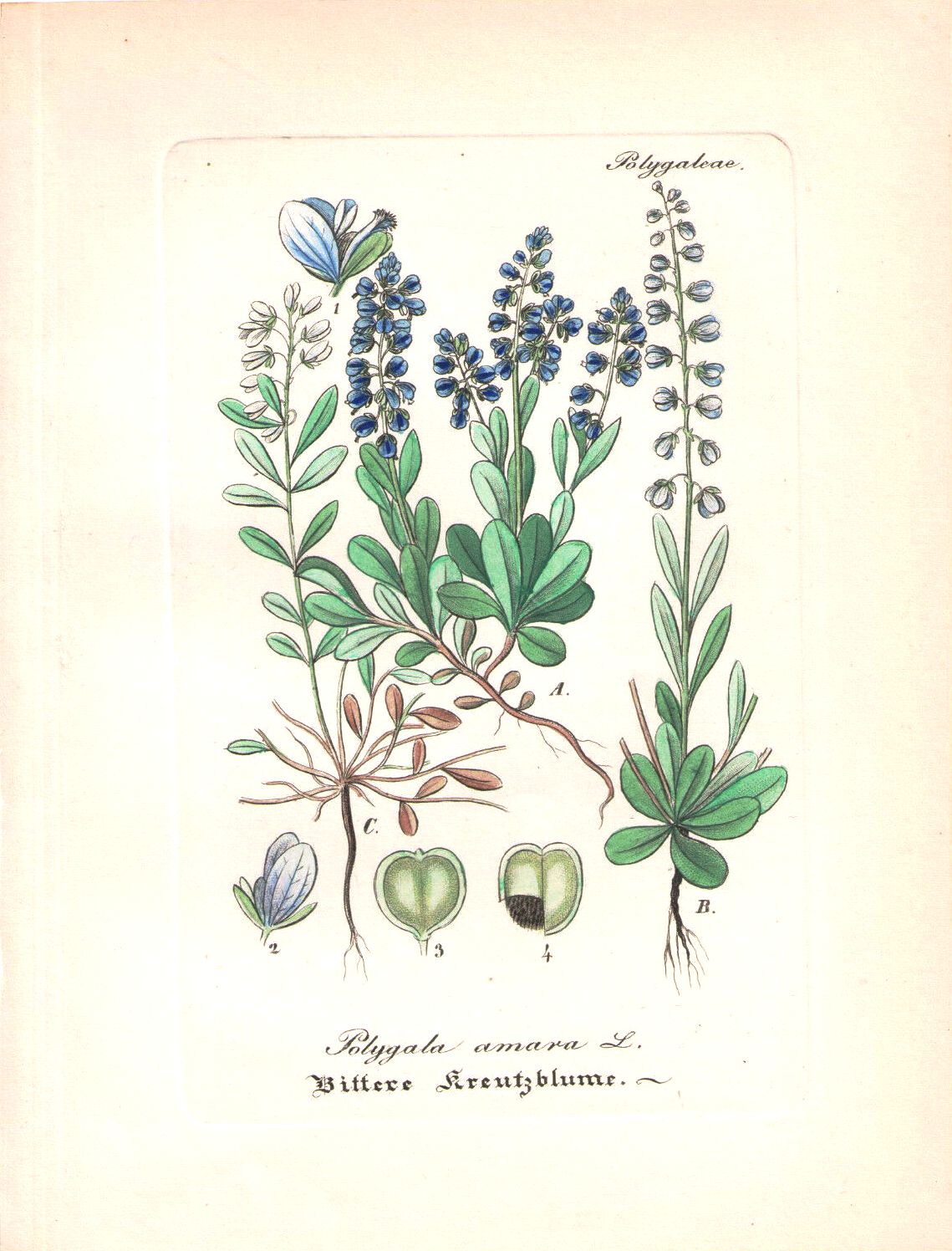Polygala amara
Polygala amara
Bitter Milkwort (Polygala amara L.) is a herbaceous species belonging to the Polygalaceae family.
Systematics –
From a systematic point of view it belongs to:
Eukaryota Domain,
Kingdom Plantae,
Magnoliophyta Division,
Magnoliopsida class,
Subclass Rosidae,
Polygalales Order,
Polygalaceae family,
Polygaleae Tribe,
Genus Polygala,
P. amara species.
The following terms are synonymous:
– Polygala alpestris C.A.Mey .;
– Polygala amara var. Degen sauce;
– Polygala amara var. Degen ex Soo sauce;
– Polygala amblyptera var. glabra Rchb .;
– Polygala buxifolia var. glabra Rchb .;
– Polygala insipida Rchb .;
– Polygala myrtifolia Fr .;
– Polygala nivea Miégev .;
– Polygala repens Mérat ex DC .;
– Polygala reptans Chevall .;
– Polygala rotundifolia Gilib .;
– Polygala uliginosa Weinm ..
Two subspecies are recognized:
– Polygala amara subsp. bitter.
– Polygala amara subsp. brachyptera (Chodat) Hayek.
Etymology –
The term Polygala comes from the Greek prefix πολυ- poly- many, many and from γἄλα gála latte: because it is believed that as forage it favors the production of milk.
The specific bitter epithet is due to the bitter, acrid taste.
Geographic Distribution and Habitat –
Polygala amara is an endemic species of temperate Europe and present in Germany, Poland, Slovakia, Czech Republic, Hungary, Slovenia, Croatia, Bosnia, Serbia and Montenegro, Italy (limited to the central-western Carnic Alps with the subspecies P. a . brachyptera).
Its habitat is that of wet grasslands and pastures, especially on chalky and calcareous soils.
Description –
Polygala amara is a perennial herb that can grow up to 0.15 meters in height.
It is a hermaphroditic species (it has both male and female organs) and is pollinated by insects.
The leaves are simple, lanceolate in shape.
The flowers are collected in racemes and are blue-violet in color, with a 4-6.5 mm corolla; lower petals with 15-30 fringes.
The flowering period is between May and August.
The fruits are capsules slightly wider than the wings which contain 2.3-2.8 mm seeds.
Cultivation –
Bitter Milkwort is a plant that is generally not cultivated and that is collected in nature for local use as a medicine.
It is a plant that prefers moderately fertile, well-drained soil that retains moisture, vegetating in full sun if the soil remains moist throughout the growing season, otherwise it is best to choose a location in partial shade but not full shade .
Propagation occurs by seed with sowing to be carried out in spring or autumn in a cold seedbed.
When the seedlings have reached a size that they can handle they can be planted in individual pots and grown in a greenhouse for their first winter. The definitive transplant must be carried out in late spring or early summer, after the last foreseen frosts.
It can also be propagated by division using cuttings of young shoots in a protected environment in late spring.
Customs and Traditions –
Bitter Milkwort is a bitter-tasting plant that is used in the medical field.
The flowering plant and the root are used to make medicines.
It is used for respiratory problems, coughs and bronchitis.
Bitter Polygala contains chemicals that help dissolve chest congestion by thinning mucous membranes and making coughing easier (used as an expectorant).
Although there is not a sufficient bibliography for this plant, it seems that at least some species of this genus in large quantities are poisonous.
This herb is bitter, diaphoretic, diuretic, emollient, slightly expectorant, galactogogue.
An infusion is used to treat stomach ailments, bladder disorders, kidney disorders, etc.
Preparation Method –
Polygala amara is harvested when it comes into flower and dried for later use.
From this plant, infusions are prepared for various medicinal uses.
Guido Bissanti
Sources
– Acta Plantarum – Flora of the Italian Regions.
– Wikipedia, the free encyclopedia.
– Useful Tropical Plants Database.
– Conti F., Abbate G., Alessandrini A., Blasi C. (ed.), 2005. An annotated checklist of the Italian vascular flora, Palombi Editore.
– Pignatti S., 1982. Flora of Italy, Edagricole, Bologna.
– Treben M., 2000. Health from the Lord’s Pharmacy, Advice and experiences with medicinal herbs, Ennsthaler Editore.
Warning: Pharmaceutical applications and alimurgical uses are indicated for informational purposes only, they do not represent in any way a medical prescription; therefore no responsibility is taken for their use for curative, aesthetic or food purposes.


